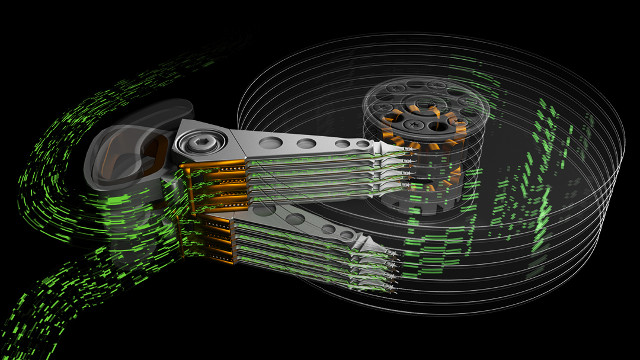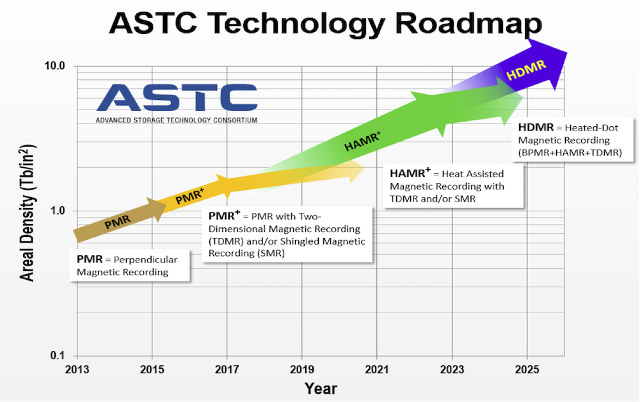SSDs may eventually replace HDDs, but the latter still have many years of life, as they come with higher capacity, and much lower price per gigabyte. But as capacity increases, performance also needs to increase, and new technologies are being developed.
Seagate is currently working on two technologies for their next generation hard drives: HAMR (Heat-Assisted Magnetic Recording) to increase data density, and hence allow for larger capacity drives, and multi-actuator technology that uses several actuators (currently just two) on the drives to improve IOPS per GB, i.e. random I/O performance.
HAMR is said to “use a new kind of media coating on each disk that allows data bits, or grains, to become smaller and more densely packed than ever, while remaining magnetically stable. A small laser diode attached to each recording head heats a tiny spot on the disk, which enables the recording head to flip the magnetic polarity of each very stable bit, enabling data to be written.”
Seagate has already built over 40,000 HAMR drives, and volume shipments of 20TB+ drives are expected in 2019. The new technology is transparent to the host computer, so the same code can be used, and projected cost per TB path beats current PMR technology. Based on the chart from ASTC (Advanced Storage Technology Consortium), HDMR (Heated-Do Magnetic Recording) will then displace HAMR around 2025 providing even greater density and capacity (100 TB drives anyone?).
 Higher densities may negatively impact random I/O performance (in terms of IOPS per TB), and larger capacity hard drives are normally used in datacenter where applications, such as artificial intelligence or IoT, require lots of data, and are sensitive to random I/O performance. So Seagate is currently working on multi actuator technology, where there’s not only a single actuator (component that moves the hard drive’s heads to read and write data), but two independent actuators – for now – operating on a single pivot point, potentially doubling the IOPS (input/output operations per second) performance of the drive.
Higher densities may negatively impact random I/O performance (in terms of IOPS per TB), and larger capacity hard drives are normally used in datacenter where applications, such as artificial intelligence or IoT, require lots of data, and are sensitive to random I/O performance. So Seagate is currently working on multi actuator technology, where there’s not only a single actuator (component that moves the hard drive’s heads to read and write data), but two independent actuators – for now – operating on a single pivot point, potentially doubling the IOPS (input/output operations per second) performance of the drive.
The host computer can treat a single dual Actuator drive as if it were two separate drives, meaning it can request two different data requests simultaneously in order to offer better performance.
While HAMR drives can already produced in small quantities, Seagate did not provide a roadmap for the implementation of dual / multi actuator technology. Nevertheless, we should expect HAMR multi actuator drives for the enterprise in a few years, and potentially for the consumer market a little later.
Via Liliputing and Tom’s hardware.

Jean-Luc started CNX Software in 2010 as a part-time endeavor, before quitting his job as a software engineering manager, and starting to write daily news, and reviews full time later in 2011.
Support CNX Software! Donate via cryptocurrencies, become a Patron on Patreon, or purchase goods on Amazon or Aliexpress





